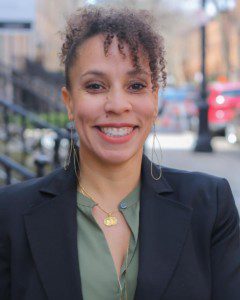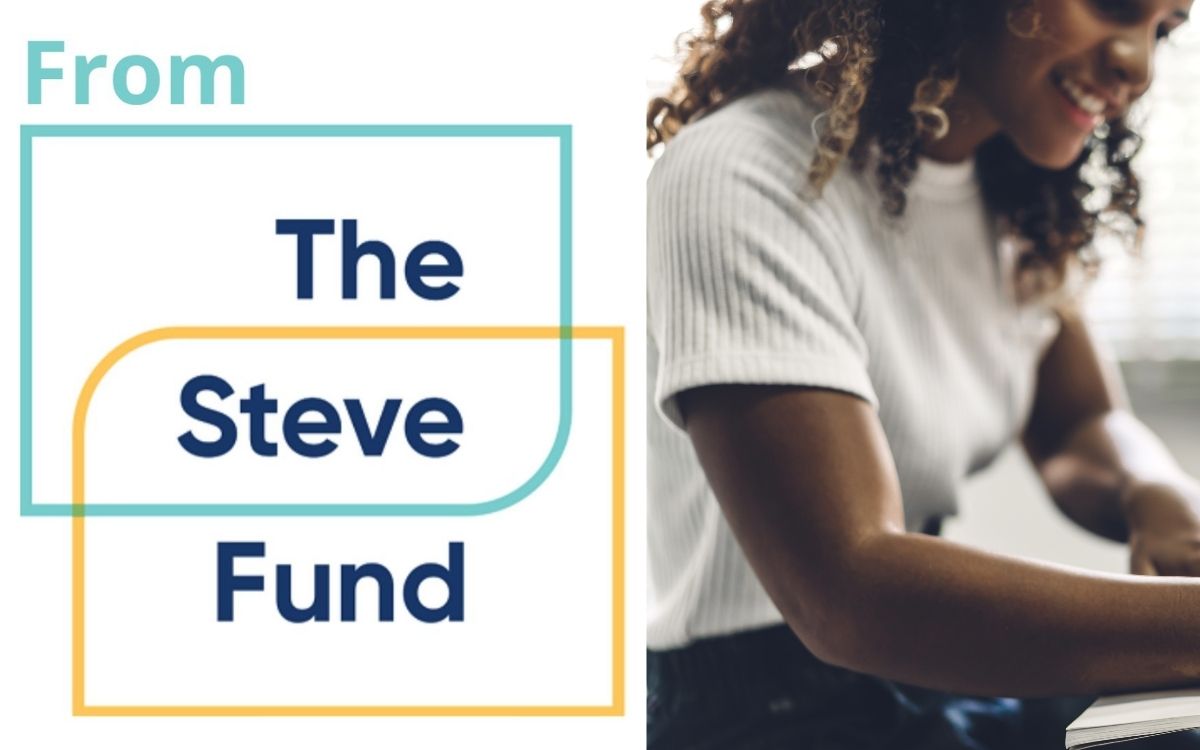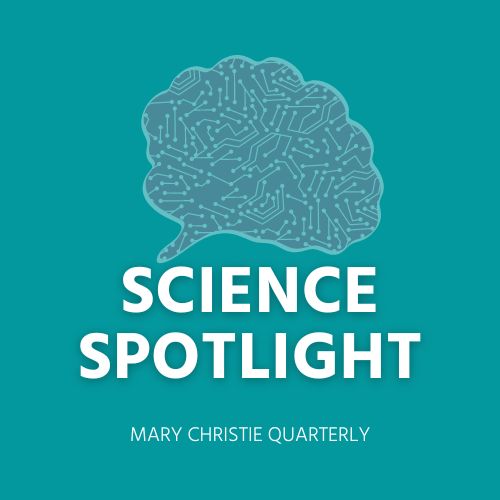
Dr. Tia Dole, Executive Director of The Steve Fund
In The Steve Fund’s (TSF) first column for the Mary Christie Quarterly, TSF’s Executive Director, Dr. Tia Dole, discusses the organization’s latest research and initiatives, including its partnership with the United Negro College Fund (UNCF), which examines and supports the mental health needs of students at historically Black colleges and universities (HBCUs) and predominantly Black institutions (PBI’s). She is interviewed by Katherine Chi, of MCI.
MCI: The Steve Fund has recently launched a partnership with the United Negro College Fund (UNCF) to improve outcomes for students at historically Black colleges and universities (HBCUs) and predominantly Black institutions (PBIs). What motivated this work?
TSF: One of the things that we noticed at the Steve Fund is that there is actually, relatively speaking, not a ton of research being done on HBCU students which account for thousands and thousands of students in this country. And they represent a really interesting population. These are students who are making a decision to go to a Black college or university. We think that those students deserve a bit more special attention. Our thought was, we’d like to see where they’re at, where they’re going, and what their needs are.
Our partnership is twofold. Number one, we are engaging with the Healthy Minds Network, an organization that conducts a well-known survey for college students. We’re asking them to conduct the survey specifically on HBCU students. One of the first things that we are doing in this partnership is ensuring that the way that we understand the information is seen through a DEI lens. For instance, you can say, “Black students are experiencing more anxiety and depression than white students.” This is an example of something that might come up or “They have access to fewer resources.” It could be any number of things. What matters is not so much the data, but the understanding of what could be driving that, what are the mediating and moderating factors of the results that we’re experiencing from the equity perspective and ours as well.
A lot of times, the type of research that is conducted on students of color is not driven by organizations of color. So, for us, we want to ensure that as we collect this information, we are really using that lens; we’re not coming from a deficit model. And by that, I mean, “Here’s a list of all the terrible things that are happening for Black students.” It’s important for us to have this reporting be balanced and seen through the lens of “What does this really mean?” Finding meaning in the data is really important and that is determined by who’s writing, so that’s the first part. The second part of it is actually to provide programming. As we collect data from this survey, we are going to be providing specific programming, workshops, and support groups, to both faculty and staff and to students on campus.
One of the things that we know for a fact is that students on HBCU campuses don’t feel that they have enough access to mental health support. The counseling center is overwhelmed. They don’t have enough clinicians, and we know that faculty and staff feel like they don’t have enough bandwidth to provide the support that students need. It’s important that we offer some of that support on sort of an ad-hoc basis, which is okay.
A really good example is the shooting that happened in Buffalo. What we heard from schools and universities is that students are scared that they’re being targeted. We know that several HBCUs have received bomb threats in the last several months and that is terrifying to students. We can say “They’ll be okay,” but really, the students are experiencing a great deal of anxiety and uncertainty about the future. I think what you see in HBCUs is it is less of a feeling that you don’t belong. But what you’ll see is that folks are feeling stressed and anxious about the events of the world. So, If you’re on a predominantly white institution, let’s say 10-12% of your students are going to be personally impacted by the shooting in Buffalo. On a Black campus, 100% of students are going to feel a sense of trauma from knowing that folks in their community are being targeted. The needs of HBCU students are really specific and it’s our job to see if we can help.
MCI: That was incredibly informative and leads to my next question – are there solutions that are most effective, or any best practices we can rely on in this regard?
TSF: There is not one way to do this. I’m a visual leaner so if you think about a student at the center of a concentric circle – you have friends, you have school, you have work, you have your community. When you think about how to support students of color or Black students in particular, you have to actually target each part of that concentric circle. From our perspective, we are trying to target each of those groups of people and we offer programming that reflects that.
Let’s say, how do you deal with the stress of going back to school? Or how do you deal with the stress of caring for a family member? We offer programming for families of color who really struggle with, number one, finding resources. They are limited. And number two, coping with the stigma of mental health conditions. It is different in different communities. You’ll hear “Oh my kid’s just lazy or he’s this or that.” There may be denial in terms of understanding that their kid actually has a mental health condition which delays treatment, meaning that they might be experiencing anxiety and depression for years before they actually get the treatment that they need.
What we’re trying to do is target families and communities, via church, via any community-based organizations to say, “Hey, these are mental health conditions. This is what you’re experiencing. So there’s another way.” Obviously, we partner with colleges and universities, and then we also partner with corporations. What we found, especially post George Floyd, which was a sort of influx of recruitment. Everyone’s saying, “We’re going to recruit young people of color coming out of school.” And then they come to those companies and they’re having a terrible experience with microaggressions and what have you. And so we help corporations with programming that changes how they see their young associates as at work and helps them with awareness around important events like Juneteenth, things like that.
And then on top of that, we’re embarking on our digital transformation which is very exciting. We understand that young people don’t want to watch a 45-minute seminar. Especially if you’re thinking about reaching down to 16-year-olds and the way they process and understand information. Over the next few months, we’re going to be creating asynchronous learning modules that are oriented around mental health. These are very short – you could watch on TikTok. And when you watch certain types of content, the algorithm of TikTok changes based on that, so if you watch something that’s good for your mental health, you’ll keep getting more of that content, if you stay engaged and you don’t swipe it away. And so just even watching our video changes the algorithm of the content that they are going to be receiving. And that’s something that we actually feel really strongly about. I’m not a big fan of TikTok. My kids are on it. Lots of young people are on it and we can’t pretend they’re not. What we actually need to do is leverage those platforms to benefit our young people.
MCI: That makes a lot of sense. I wonder, from a mental health perspective, what you think of social media as a source of stress? Particularly for young people of color who are constantly seeing devastating events in the news.
TSF: It’s a delicate balancing act. What we try to do is really frame our interventions, our programming, around where our young people are. As a society, we are always telling them to engage in self-care. They never want to hear that word again. If you’re still using “self-care,” please delete this from your vocabulary, because it actually creates a lot of pressure with young people feeling like they’re shouldering this concept that they should always be doing better. I should be doing better in school. I should be sleeping more. I should be doing yoga, all these things. And really, if you’re shouldering that all the time, you’re putting too much pressure on yourself. We remind ourselves of that and of the way people consume information differently. You may want to be able to read something, so we have our landing page that’s loaded with content. You may want to watch a video. You may want to listen to a podcast. What we’re trying to do is disseminate information based on our stakeholders needs, not based on our needs.
A lot of times, the type of research that is conducted on students of color is not driven by organizations of color. We want to ensure that as we collect this information, we are really using that lens; we’re not coming from a deficit model.
MCI: That’s great. If I can track back to the partnership with the United Negro College Fund, what kinds of interventions will you be doing as part of that initiative?
TSF: It will depend on the school. Normally workshops for faculty in predominantly white serving institutions are about racism, microaggressions, how do you identify inherent biases. At HBCUs, there is the assumption that most of the faculty and staff are folks of color, that’s actually not necessarily true, so you still need to engage in those types of conversations. Simply because someone’s working at Howard University doesn’t mean that they are not engaging in their life with bias. But the other big thing we are seeing with faculty and staff is just this feeling of helplessness with the number of students who are coming in full of anxiety and depression.
Students are performing worse than they ever have in the last 20 years in school because they are completely drained from the last few years. COVID, George Floyd, the war in Ukraine, all those terrible wildfires in Australia which was so upsetting. Everyone, including faculty and staff, are burned out from having to navigate the remote world. And now we’re back in person and students aren’t bouncing back.
They’re not. They may be back in person, but they’re not the same. And I think that feels really overwhelming for faculty. People are leaving academia because of the pressure of it. So how can we actually provide a little bit of solace to them as well as helping them recognize the signs and symptoms of a mental health condition in the moment. If a student who was performing well suddenly drops off, don’t make the assumption they just don’t care. Maybe there’s something going on in this student’s life. How can you recognize the signs and symptoms of an illness so that we can stop it and/or track it?
MCI: What other lessons have you learned in beginning this work with UNCF?
TSF: As adult allies, we like to think that we know what young people want. And we like to think that what young people want stays the same year to year. Our hope is that, through this survey, we’ll have a very much “in the moment” understanding of what young people are looking for. For instance, we went to a surgeon general summit. We were one of the key partners with the California endowment in Los Angeles in June. And the young people there were super clear to us. “We don’t want traditional therapy spaces. We want what matters to us. We want healing spaces that are peer led that are non-traditional, that are not in gentrified areas. What we want is to feel a sense of humanity from the people with whom we are seeking help.”
And that person doesn’t need to be a licensed clinician. That was very clear. To me, that that was like, “Okay, I got it.” What can we do here to make sure that we are providing healing spaces that aren’t clinical? As a clinical psychologist, my first thought is always to make sure we have a clinician on hand but they don’t want us there all the time, so we have to center their needs. That to me is a directive and I could ignore it and keep doing what I’ve been doing, or I could listen to them and actually pivot the work that we’re doing to focus on their needs.
The model is to train the peers, to run support groups, or run workshops, and then have the peers co-lead them with an adult ally in the room. I think it’s interesting because peer support is super helpful and also can be high risk if something happens. So we always make sure that there’s an adult ally in the room, even if the peer is over 18. We feel really strongly about that, but the adult ally doesn’t necessarily have to be a clinician. It just needs to be someone who was trained in our model.
MCI: How do you think peer support specifically helps with these communities?
TSF: I think the first thing that comes to my mind is the lack of judgment. A lot of folks just want a listening ear without judgement. Peer support is helpful because there is the assumption of experience to a certain extent. For example, I have just finished applying for college and I am completely worn out from the whole thing. You know exactly where I’m coming from, and I don’t have to explain that part to you. Me, as a Black woman, speaking to another Black woman of my same age is, is incredibly validating because I know she understands my experience. The same thing happens with peer support, you don’t have to explain certain things. My kids are always explaining different technology to me, you know, it’s annoying for them.
MCI: Lastly, I wanted to ask of specific challenges that HBCUs and PBIs face in taking on this work?
TSF: I would say resources and prioritization. Some HBCUs have more resources than others. UNCF is for private universities. Thurgood Marshall works with public colleges and universities. Two different budgets that you’re working with means that you have to be super careful about how you’re allocating your resources. I think a lot of colleges and universities are struggling with enrollment. Young people are not enrolling in college the way that they were before, in large part because of mental health issues. The number one reason now that young people drop out of college is because of mental health. It used to be finance. I think university and college presidents and their administrations are really trying to figure out how to pivot these resources to where they are needed versus where they have been. And that pivot is really challenging because they just finished their budgets. It’s the end of July. And if they need additional resources for this year for a traumatic event, they’re not there.
MCI: Any last comments about the partnership or the work of The Steve Fund in general?
TSF: I think we’d like to deepen the partnership, over time, to really highlight the importance of HBCUs in the context of this country, how special they are. The United States was built on slavery and with HBCUs, you have institutions that are led by and created by Black people. There’s nothing more special than that. Finally, if I were to add one more thing: Students are struggling. Students need help, but they know what they want. If I could say anything to anybody who potentially reads this it is, “Listen to what our young people are saying. Stop projecting what you think they should receive.”




